Welcome to our beginner’s guide on setting up your own backyard freshwater prawn/shrimp hatchery! Are you intrigued by raising these delicious crustaceans right in the comfort of your home? Well, you’re in the right place! Creating your hatchery, from planning and infrastructure setup to sourcing larvae and caring for your prawns/shrimps until harvest.
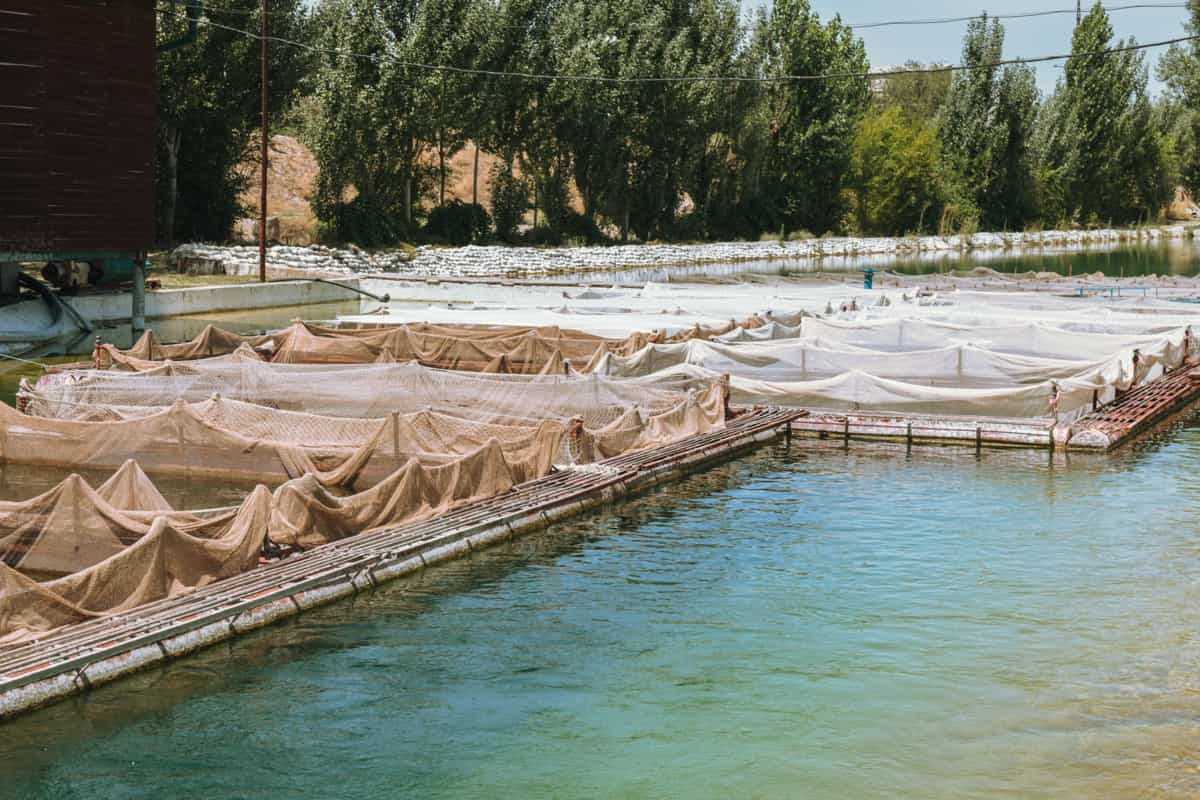
Freshwater prawns and shrimps are not only delicious and nutritious. In this beginner’s guide, we go through the step-by-step process of setting up your backyard hatchery, from planning and infrastructure design to selecting the right larvae and feeding and care techniques. No prior experience? No problem! We will provide easy-to-follow instructions and essential tips to ensure success.
What is Backyard Freshwater Prawn/Shrimp Hatchery?
A backyard freshwater prawn/shrimp hatchery is a small-scale operation where you can raise freshwater prawns or shrimps in your home. It’s an exciting venture that allows you to produce your sustainable source of protein. These hatcheries are designed to mimic the natural habitat of prawns or shrimps, providing them with the ideal conditions for growth and reproduction.
You create a suitable water environment in hatcheries, including tanks or ponds, with proper filtration and aeration systems. The water quality, temperature, and pH levels are carefully monitored to ensure the well-being of the prawns or shrimps. Once the larvae are sourced from reputable suppliers and introduced to the hatchery, you feed them according to their nutritional needs and closely monitor their growth stages.
Understanding Freshwater Prawns/Shrimps
Freshwater prawns and shrimps are crustaceans belonging to the family of decapods. They are found in freshwater environments such as rivers, lakes, and ponds. These species are known for their delicious meat and can be a valuable addition to your backyard hatchery.
- Freshwater prawns and shrimps have a streamlined bodies with a hard exoskeleton and segmented appendages.
- They exhibit various colors and patterns, ranging from brown and green to vibrant hues.
- These crustaceans prefer clean and well-oxygenated water with moderate temperature and pH levels.
- Good hiding places, such as rocks or vegetation, are essential for their well-being.
- They are omnivorous, feeding on a diet that includes algae, plankton, detritus, and small aquatic organisms.
In case you missed it: How This Farmer Earned 5 Lakhs from Fish and Prawn Mixed Farming: A Success Story of an Aqua Farmer in India
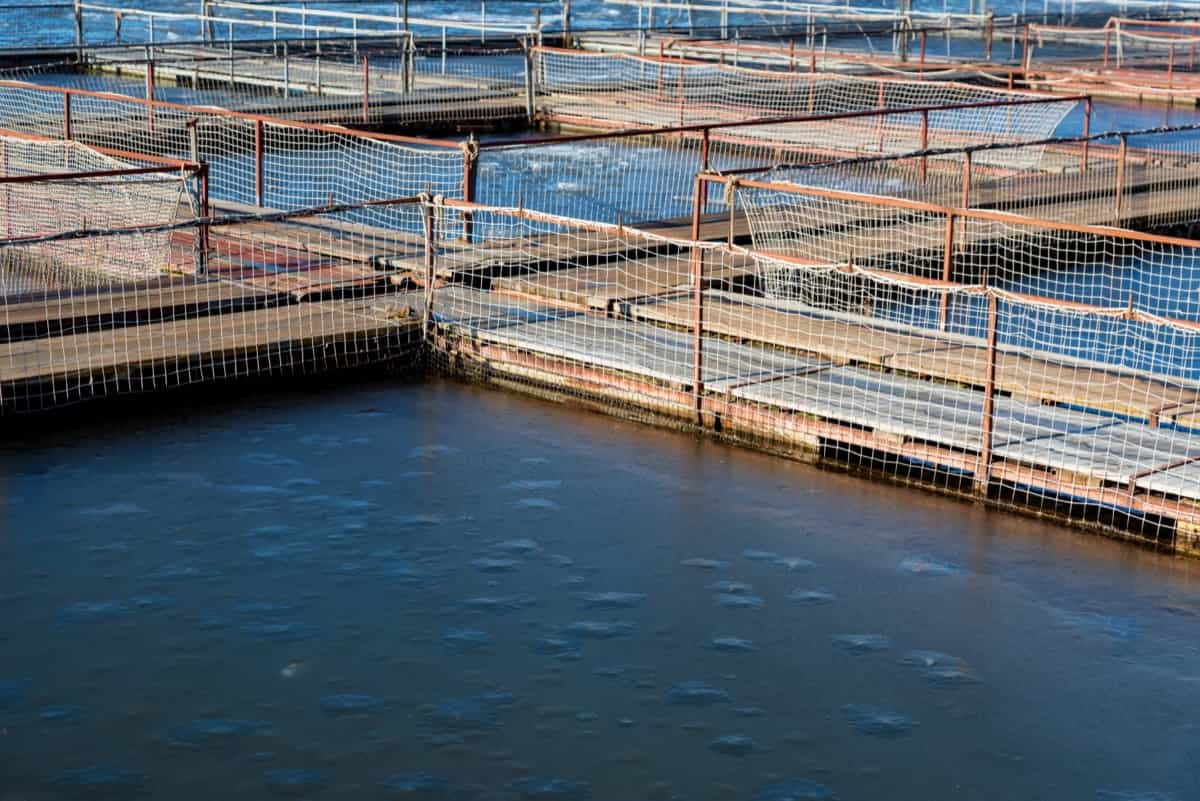
Popular Freshwater Prawn Species for Hatcheries
Macrobrachium Rosenbergii is the most widely cultured freshwater prawn species in the world. It is native to Southeast Asia, including Africa, South America, and the Caribbean. M. rosenbergii is a large prawn, reaching a maximum length of about 30 centimeters. It is also a prolific breeder, producing up to 100,000 eggs per clutch.
Macrobrachium Nipponense is native to East Asia. It is a smaller prawn than M. rosenbergii, reaching a maximum length of about 20 centimeters. M. nipponense is also a hardy species that can tolerate various water conditions. It is not as prolific a breeder as M. rosenbergii, but it is still a valuable aquaculture species.
Macrobrachium Malcolmsonii is native to India and Bangladesh. It is a small prawn, reaching a maximum length of about 15 centimeters. M. malcolmsonii is less widely cultured than M. rosenbergii or M. nipponense, but it is still a valuable aquaculture species. This species can tolerate many water conditions and is a prolific breeder.
Benefits of Starting Your Backyard Hatchery
- Fresh and Sustainable Food: Enjoy fresh and sustainable seafood from your backyard.
- Cost Savings: Reduce expenses on shrimp by producing your supply.
- Educational and Engaging: Learn about the captivating life cycle of shrimp, providing an educational experience for all.
How to Start Own Backyard Freshwater Prawn/Shrimp Hatchery
Obtain the Necessary Permits and Licenses
Research and comply with local regulations regarding shrimp farming.
Prepare the Grow-out Pond
- Choose an area not prone to flooding or pesticide runoff.
- Ensure the pond has a 2 to 5 feet depth and a surface area of 1 to 5 acres.
- Use skimmers, filters, and aerators to maintain optimal water quality.
- Fertilize the pond to promote the growth of natural food sources like algae.
- Maintain a temp of at least 70°F and a pH between 6.5 and 9.5.
In case you missed it: How to Start Shrimp/Prawn Farming from Scratch: Check How this Guide Helps Beginners
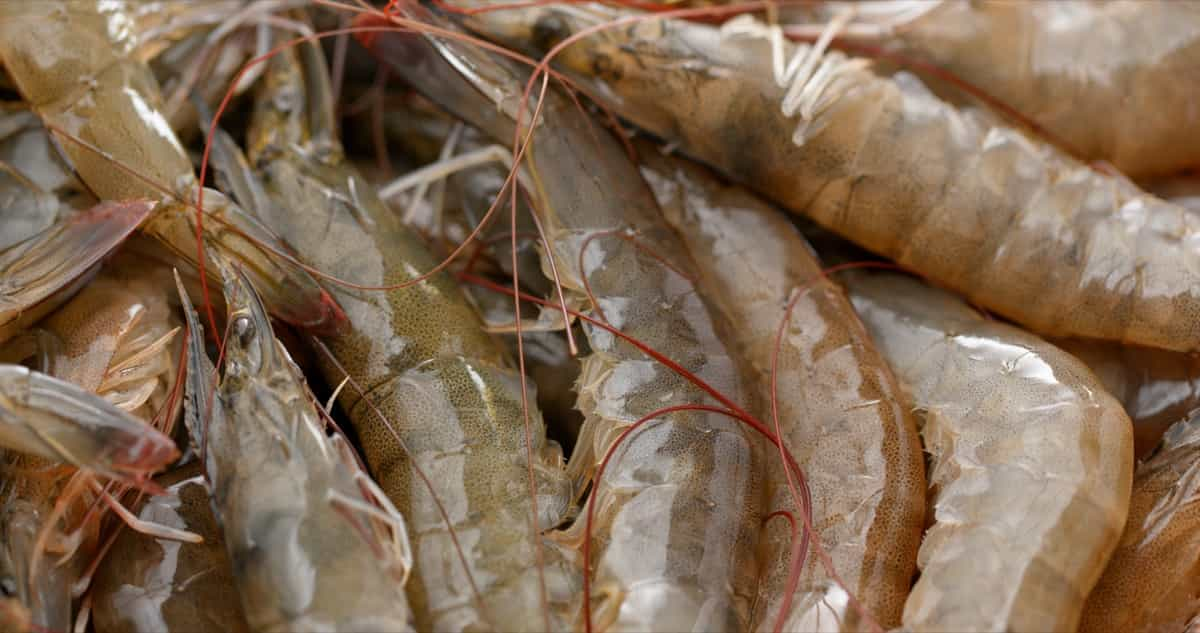
Purchase Juvenile Shrimp from a Hatchery
- Hatching shrimp is complex and requires expertise, so buying juveniles from a reputable hatchery is best.
- Acclimate the shrimp to the water in your grow-out pond gradually.
Stock the Pond
- Maintain low stocking densities to prevent cannibalism and stunted growth.
- Allocate at least 4 square meters per shrimp to ensure enough space for each.
Feed the Shrimp
- Once they reach 5 grams, provide them with a pelleted feed containing at least 38% protein.
- Smaller shrimp can rely on small organisms in the pond for nourishment.
- Feed the shrimp twice daily, with a larger feeding at dusk since they are nocturnal.
Setting Up the Backyard Freshwater Prawns/Shrimps Hatchery
Select a Suitable Location
Hatcheries require a reliable power supply and a backup generator to ensure continuous operation of the aeration system. While having the hatchery close to the nursery or grow-out pond locations is preferable, transporting postlarvae (PL) for long distances is possible. Water supplies must have excellent quality, regardless of whether they are freshwater, seawater, brine, or made from artificial sea salts.
In tropical areas, tanks can be placed in the open but should have simple shading to maintain the water temperature from rising too high or dropping too low. Building structures in tropical areas can be simple and easily extended or relocated. The proper building is essential for temperature control and efficiency in temperate zones.
Construct the Hatchery Infrastructure
Build a series of tanks or ponds to accommodate the different prawn/shrimp development stages. Install appropriate filtration systems to maintain water quality and oxygen levels.Set up aeration devices to ensure sufficient oxygenation for the growing prawns/shrimps.
Source High-quality Broodstock
cquire healthy, disease-free prawns/shrimps from a reputable supplier or hatchery. Select individuals with desirable traits like size, growth rate, and disease resistance.
Provide Optimal Environmental Conditions
- Maintain the water temperature within the suitable range for the chosen prawn/shrimp species.
- Monitor and adjust pH levels to ensure they fall within the recommended range.
- Regularly test water quality parameters, such as dissolved oxygen and ammonia levels.
Implement Proper Feeding and Nutrition
- Feed the prawns/shrimps a balanced diet that meets their nutritional requirements.
- Use commercial feeds or a combination of natural food sources and supplementary feeds.
- Monitor feeding rates and adjust accordingly to promote healthy growth.
In case you missed it: 16 Key Rules for Effective Shrimp/Prawn Farm Management: From Planning to Reduce Production Cost
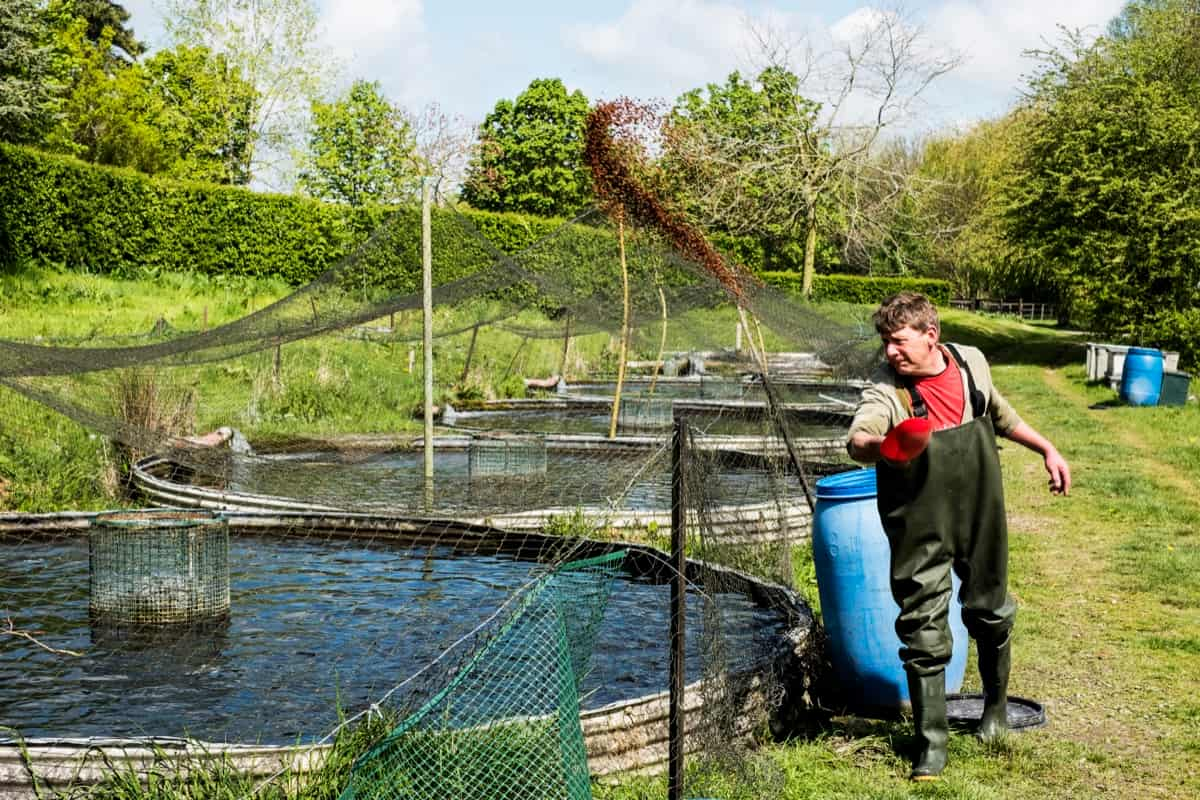
Manage the Hatchery Operation
- Keep detailed records of water quality parameters, feeding regimes, and growth rates.
- Monitor the health of the prawns/shrimps regularly and promptly address any signs of disease.
- Implement biosecurity measures to prevent the introduction and spread of diseases.
Sourcing Freshwater Prawn/Shrimp Larvae for Backyard Hatchery
- Freshwater Prawn (Macrobrachium malcolmsonii): It is the Second largest fast-growing prawn species in Indian rivers. Suitable for both monoculture and polyculture farming systems.
- Broodstock Management: Essential for continuous seed production. Maturation and breeding vary based on agro-climatic conditions. Berried females carry a significant quantity of eggs. Successful breeding and seed production were achieved using air-lift bio-filter re-circulatory systems.
- Spawning and Larval Rearing: Mating and spawning occur after pre-mating molt. The incubation period of eggs ranges from 10-15 days. Larval rearing techniques include static, flow-through, and green water methods. Water quality parameters significantly impact larval survival and growth.
- Larval Feeding: Artemia nauplii are excellent larval food. Feed items include zooplankton, the flesh of prawns and fish, earthworms, and more. Feeding schedules vary with larval development stages.
- Harvesting of Postlarvae: Harvesting can be challenging due to crawling behavior. String shell devices facilitate regular post-larval harvest. Post-larval survival and production rates are improved with air-lift bio-filter re-circulatory systems.
- Post-Larval Rearing: Healthy juveniles are raised in well-prepared earthen ponds or hatcheries. A salinity of 10 parts per thousand is optimal. Stocking density, feed, and water quality management are crucial for successful rearing.
- Grow-Out Culture: Ponds with embankments and favorable bottom substrate support better growth. Stocking density ranges from 30,000 to 50,000/ha for semi-intensive monoculture. Temperature control is vital, with 29-31°C being optimal.
- Production and Yield: Male prawns grow faster than females. Supplementary feeds like groundnut oil cake and fish meal are used. Monoculture yields 750-1,200 kg/ha in six months. Polyculture with carp can produce 300-400 kg of prawn and 2,000-3,000 kg of carp.
Feeding and Care Backyard Freshwater Prawn/Shrimp Hatchery
The recommended water quality parameters are as follows: temperature of 28-30°C, pH of 7.8-8.2, dissolved oxygen of 4.4 to 5.2 ppm, total hardness of 3000-4500 ppm, total alkalinity of 80-150 ppm, salinity of 18-20‰, and ammonical nitrogen of 0.02-0.12 ppm. Larval feeding involves food items such as Artemia nauplii, zooplankton, rotifers, prawn/fish flesh, molluscan meat, earthworms, and egg custard. Freshly hatched Artemia nauplii are initially given at a rate of 1 g/30,000 larvae twice daily for 15 days or until they reach stage VI. Subsequently, feed is provided once daily, along with egg custard and mussel meat/tubificid worm four times daily.
In case you missed it: Making 60 Lakh Per Year from Prawn/Shrimp Farming – A Success Story of an Aqua Farmer
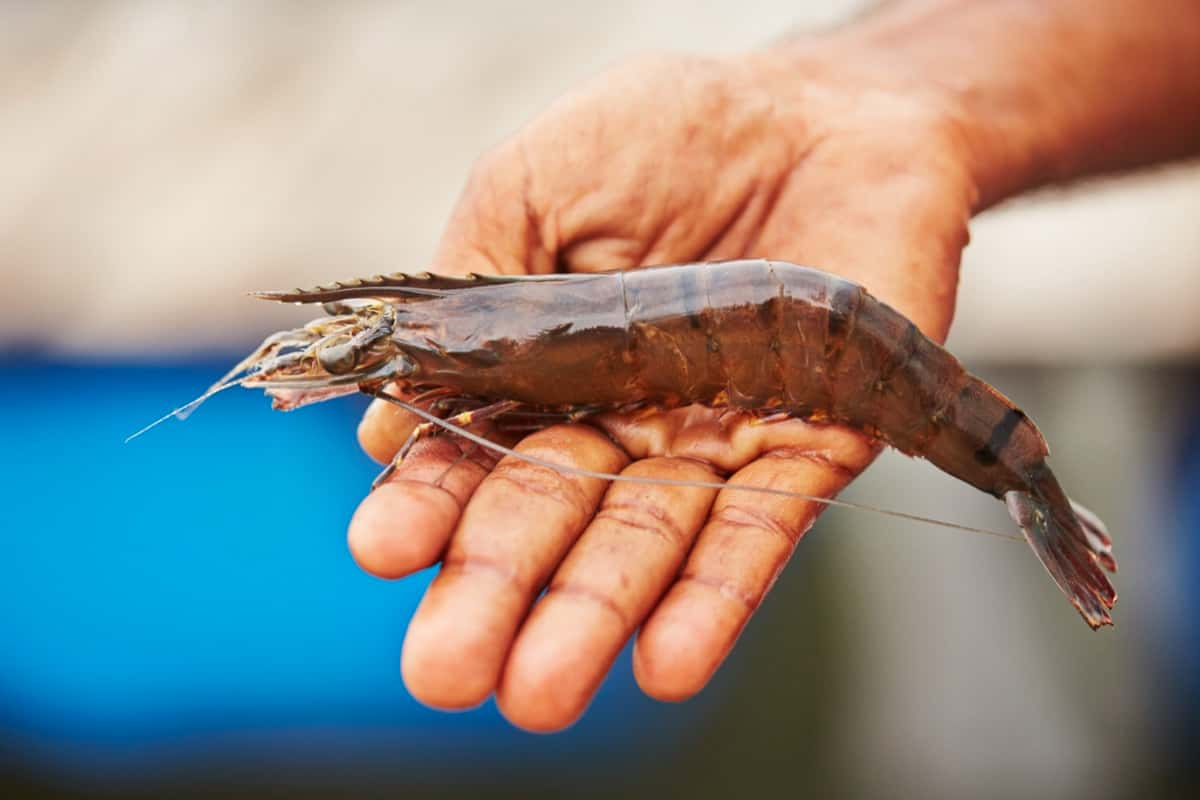
Growth and Harvesting Backyard Freshwater Prawn/Shrimp Hatchery
Harvesting post-larvae in backyard freshwater prawn/shrimp hatcheries can be challenging due to their crawling behavior. Traditional methods like turn-down and drain siphoning could be more effective and safe. To address this, a string shell device is used for phased harvest of post-larvae, minimizing competition and cannibalism. Post-larvae survival and production rates range from 10 to 20 post-larvae per liter. During post-larval rearing, optimal growth and survival are achieved at ten parts per thousand salinity.
A stocking density of 10-15 postlarvae per liter and proper feed and water quality management is recommended. In grow-out culture, higher embankments and sandy-clay pond bottoms are favorable. Stocking density varies from 30,000 to 50,000/ha for semi-intensive monoculture and up to 1 lakh/ha for intensive farming with water exchange and aeration. Temperature plays a crucial role, with 29-31°C optimal for growth and survival.
Key Tips for a Successful Backyard Freshwater Shrimp Hatchery
- Biosecurity is Crucial: Implement measures to maintain biosecurity to prevent diseases and ensure the production of healthy post-larvae. Secure a good source of water that can be properly filtered and sterilized and sustain clean freshwater for optimal salinities.
- Water Sterilization: Use practical methods to sterilize water, such as cleaning and sterilizing tanks with a bleach solution or using chlorine to sterilize seawater for hatching fertilized shrimp eggs. Ozone can also be used to prevent bacterial contamination.
- Disassemble and Sterilize Pipework: Completely disassemble hatchery pipework and sterilize it by soaking it in a chlorine solution to prevent bacteria-related disease problems. A clean hatchery is essential for sustainability.
- Attention to Feeds: Provide the best feeds for broodstock preparation, larval development, and proper nutrition throughout each stage. Varied and complete diets for mature female shrimp ensure viable eggs and high hatch rates. Precise feeding protocols and appropriate algal densities are necessary for successful larval development.
- Design and Location of the Hatchery: Choose a location away from rivers and on the beach to ensure continual access to full-strength seawater. Adequate space, biosecurity measures, and access to good infrastructure are important for increasing production and supplying high-quality post-larvae.
Backyard Freshwater Prawn Hatchery: Scientific Interventions(Case Study)
In the realm of aquaculture, backyard freshwater prawn hatcheries have emerged as a source of income and employment for many. One such success story is that of Mr. Manoj KK from Atholi, Kerala. Fifteen years ago, Mr. Manoj embarked on a journey to harness the fish wealth in his five-acre pond, starting with tiger shrimp farming. However, climate changes and the emergence of white spot disease posed major challenges.
To seek a solution, Mr. Manoj turned to the Peruvannamuzhi Krishi Vigyan Kendra scientists, who suggested establishing a hatchery for breeding giant freshwater prawns (Macrobrachium rosenbergii) in his backyard. Dr. B Pradeep, a Subject Matter Specialist in Fisheries, explained that the availability of postlarvae prawns is a significant obstacle for aspiring prawn farmers, necessitating captive breeding.
Last year, Mr. Manoj set up an experimental hatchery in his backyard, which yielded positive results. He was able to sell around 5000 postlarvae prawns in the first stage, showcasing the success of his determination and timely scientific intervention. Encouraged by the outcome, Mr. Manoj plans to expand his hatchery.
In case you missed it: Exploring the Potential of Tuber Crops in Integrated Farming Systems: Maximizing Yields and Profit
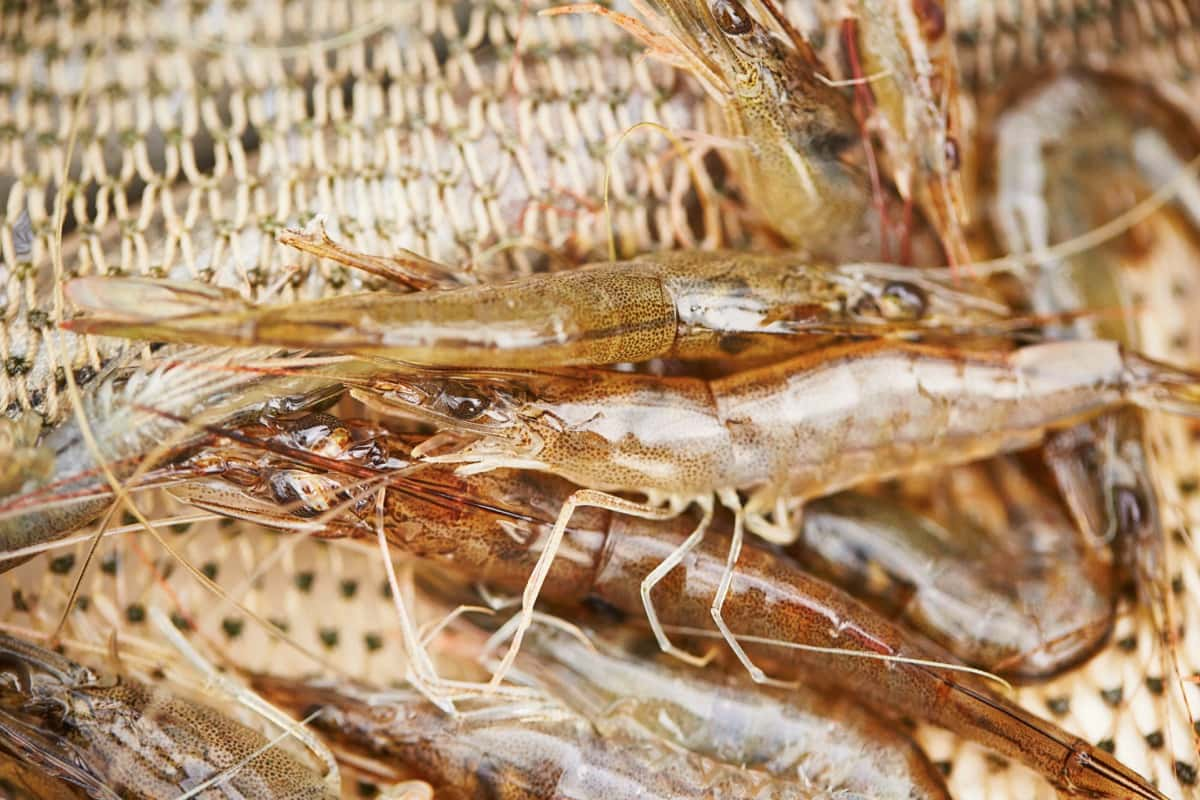
Additionally, Mr. Manoj’s innovation in low-cost fish culture cage production for Pearlspot farming has garnered attention. He has developed fiber cages made from wire mesh and replaced expensive PVC pipes with empty plastic bottles to float the cages on the water surface. This low-cost model reduces the production cost significantly, making fish culture cages more accessible to farmers.
With a full-fledged Pearlspot hatchery unit, Mr. Manoj now produces approximately 20,000 fingerlings each breeding season. His endeavors in backyard freshwater prawn hatchery and low-cost cage production have been recognized and celebrated by institutions like the Indian Institute of Spices Research. Mr. Manoj’s success story is a testament to the power of scientific interventions and the potential for economic growth in aquaculture.
Watch the Video for Backyard Shrimp Farming here:
Conclusion
Setting up your backyard freshwater prawn/shrimp hatchery can be rewarding. With proper planning, scientific interventions, and determination, you can create a successful hatchery and enjoy the benefits of aquaculture.
- Types of Pesticides Used in Agriculture: A Beginner’s Guide
- Economical Aquaculture: A Guide to Low-Budget Fish Farming
- 15 Common Planting Errors That Can Doom Your Fruit Trees
- How to Make Houseplants Bushy: Effective Tips and Ideas
- Innovative Strategies for Boosting Coconut Pollination and Yield
- Pollination Strategies for Maximum Pumpkin Yield
- The Complete Guide to Chicken Fattening: Strategies for Maximum Growth
- Natural Solutions for Tulip Problems: 100% Effective Remedies for Leaf and Bulb-Related Issues
- Revolutionizing Citrus Preservation: Towards a Healthier, Greener Future
- Natural Solutions for Peony Leaf and Flower Problems: 100% Effective Remedies
- Maximizing Profits with Avocado Contract Farming in India: A Comprehensive Guide
- Natural Solutions for Hydrangea Problems: 100% Effective Remedies for Leaf and Flowers
- The Ultimate Guide to Choosing the Perfect Foliage Friend: Bringing Life Indoors
- From Sunlight to Sustainability: 15 Ways to Use Solar Technology in Agriculture
- The Ultimate Guide to Dong Tao Chicken: Exploring from History to Raising
- The Eco-Friendly Makeover: How to Convert Your Unused Swimming Pool into a Fish Pond
- Mastering the Art of Delaware Chicken Farming: Essentials for Healthy Backyard Flocks
- 20 Best Homemade Fertilizers for Money Plant: DIY Recipes and Application Methods
- How to Craft a Comprehensive Free-Range Chicken Farming Business Plan
- Brighten Your Flock: Raising Easter Egger Chickens for Beauty and Bounty
- How to Optimize Your Poultry Egg Farm Business Plan with These Strategies
- Subsidy for Spirulina Cultivation: How Indian Government Schemes Encouraging Spirulina Farmers
- Ultimate Guide to Raising Dominique Chickens: Breeding, Feeding, Egg-Production, and Care
- Mastering the Art of Raising Jersey Giant Chickens: Care, Feeding, and More
- Ultimate Guide to Raising Legbar Chickens: Breeding, Farming Practices, Diet, Egg-Production
- How to Raise Welsummer Chickens: A Comprehensive Guide for Beginners
- How to Protect Indoor Plants in Winter: A Comprehensive Guide
- Ultimate Guide to Grow Bag Gardening: Tips, Tricks, and Planting Ideas for Urban Gardeners
- Guide to Lotus Cultivation: How to Propagate, Plant, Grow, Care, Cost, and Profit
- Agriculture Drone Subsidy Scheme: Government Kisan Subsidy, License, and How to Apply Online
- Ultimate Guide to Raising Araucana Chickens: Breed Profile, Farming Economics, Diet, and Care
- Bringing Hydroponics to Classroom: Importance, Benefits of Learning for School Students
- Ultimate Guide to Raising Polish Chickens: Breed Profile, Farming Economics, Diet, and Care
- Ultimate Guide to Raising Australorp Chickens: Profile, Farming Economics, Egg Production, Diet, and Care
- Silkie Chicken Farming: Raising Practices, Varieties, Egg Production, Diet, and Care
- Sussex Chicken Farming: Raising Practices, Varieties, Egg Production, Diet and Care